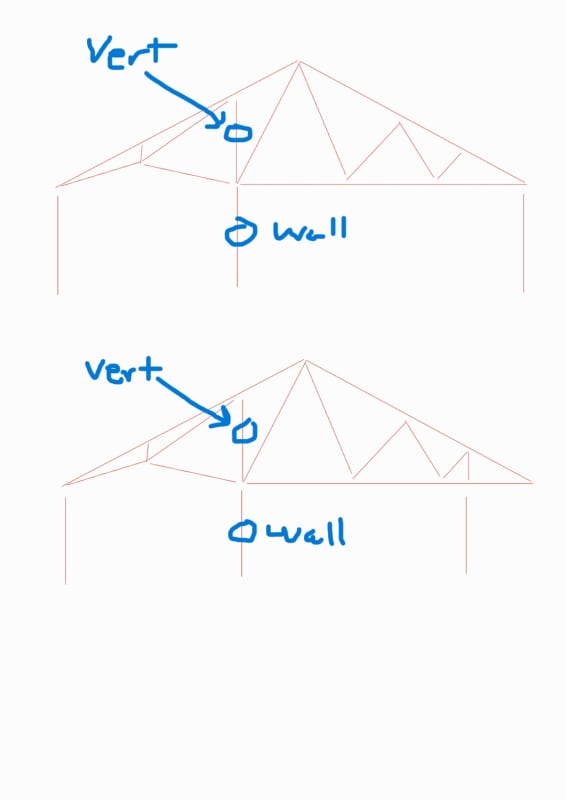I want some opinions on this truss. It's an existing residential cathedral truss that spans only 30 feet. I am 99% sure that the reactions are on the outsides only, especially 30 feet isn't that long for a truss to span to both of its ends. The part I am unsure of is because of a vertical web that runs straight to an interior wall. That being said, just because it has a vertical web on top of a wall, doesn't mean it is a bearing point. I have designed trusses that have similar configurations with 2 bearing points on its ends only, but I have also designed similar configurations with 3 bearing points with one in the interior. Not saying I am a pro when it comes to designing trusses, but enough times to have an idea of what can or can't be done, but not enough times to not get stumped on this situation. Though I still think it's not load bearing. There is no gap, but I've seen many times that contractors don't leave gaps between truss bottom chords and top of plate members for partition walls. Also, maybe they did leave a gap, but as years went by, it sagged to the point that it's bearing on the wall, but not enough to cause any structural or serviceability issues. I did not see any "crushing" on the top plate (didn't check all locations).
What I unfortunately can't check is if the wall is sitting on a beam or joists below it. If it's on joists that are 2+ feet away from the support, then I would ultimately assume not load bearing. If the wall was on a beam, i would still be unsure at that point. Until we get a chance to go into the crawl space (have to create a hole somewhere which adds more time and cost, and would like to try figuring it out before we go that route)

What I unfortunately can't check is if the wall is sitting on a beam or joists below it. If it's on joists that are 2+ feet away from the support, then I would ultimately assume not load bearing. If the wall was on a beam, i would still be unsure at that point. Until we get a chance to go into the crawl space (have to create a hole somewhere which adds more time and cost, and would like to try figuring it out before we go that route)

